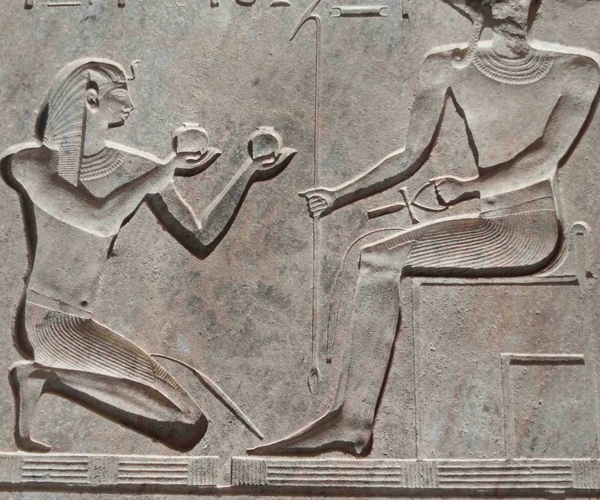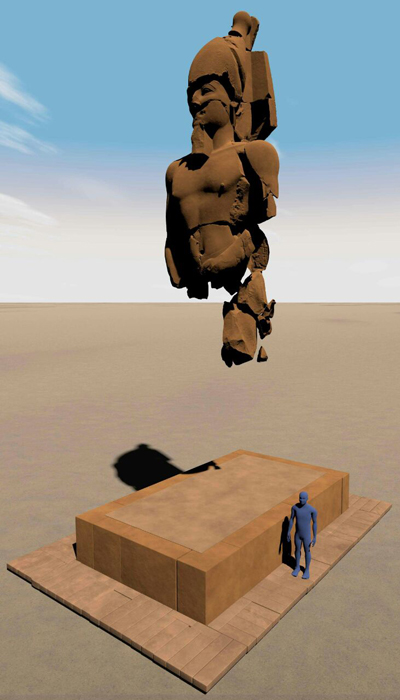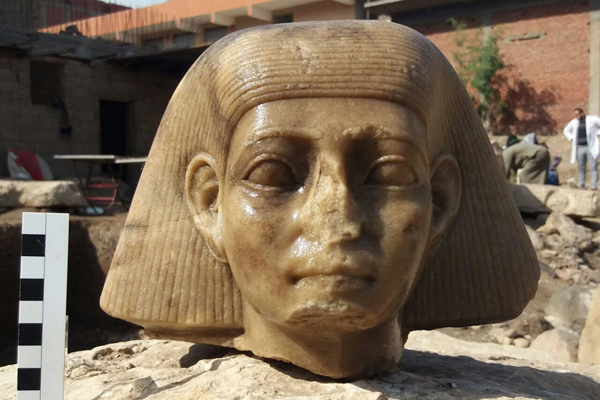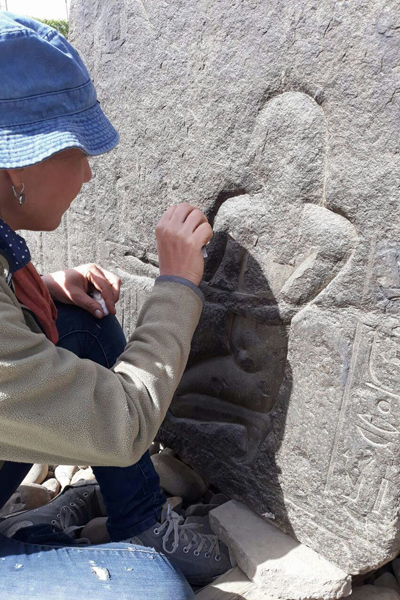
A frieze of falcons found in the temple
The Egyptian-German excavation mission at Matariya, Heliopolis, recently uncovered roughly 4,500 fragments of King Psamtek I's quartzite colossus, parts of which were first discovered last year at the nearby Souq Al-Khamis archaeological site.
Ayman Ashmawy, Head of the Ancient Egyptian antiquities department at the Egyptian Ministry of Antiquities, said that these fragments, along with the previously discovered 6,400 pieces, allow researchers to calculate the original size and shape of the colossus, which was deliberately destroyed.

One of the uncovered fragments
“The new fragments confirm that the colossus once depicted King Psamtek I standing, but it also reveals that his left arm was held in front of the body, an unusual feature. A very carefully carved scene on the back-pillar shows the kneeling king Psamtek I in front of the creator-god Atum of Heliopolis,” Ashmawy told Ahram Online.
He added that the majority of the fragments were found in south of the colossus' pedestal.
The temple area was left open, Ashmawy added, probably during the Fatimids Era when the temple walls were dismantled to be reused in several Islamic buildings.

A digital reconstruction of the King Psmatek I colossus
Dietrich Raue, Head of the German mission, explained that excavation work was accompanied by a geomorphological and geophysical survey which revealed many fragments of a quartzite gate belonging to Ramses II and (1279-1213 BCE, 19th Dynasty) and Nektanebo I (379/8–361/0 BCE, 30th Dynasty) near the latter's temple in Matariya.

A head found in the Ptolemaic workshop
Raue pointed out that the geophysical survey had indicated a number of areas with a large number of fragments of the former temple.
Within the four ruined walls of the temple, he said, some exceptional finds were made.
Among them were a fragmented frieze of falcons, part of a gate of Merenptah (1213-1203 BCE, 19th Dynasty) as well as parts of a colossal Ramesside sphinx carved in red granite.
“It seems evident that Nektanebo I added his building to a major temple built at an earlier date,” Raue told Ahram Online.

Restoration work on the colossus
The archaeologist asserted that excavation work in the area has led to the discovery of new room units from the mid-Ptolemaic era.
Some fragments reveal the known practice of reusing of older pharaonic temple items from previous periods during the 2nd and 1st millennium BCE.
The work was accompanied by archaeobotanical and archaeozoological studies for the identification of plant and animal remains at the site.
Short link: